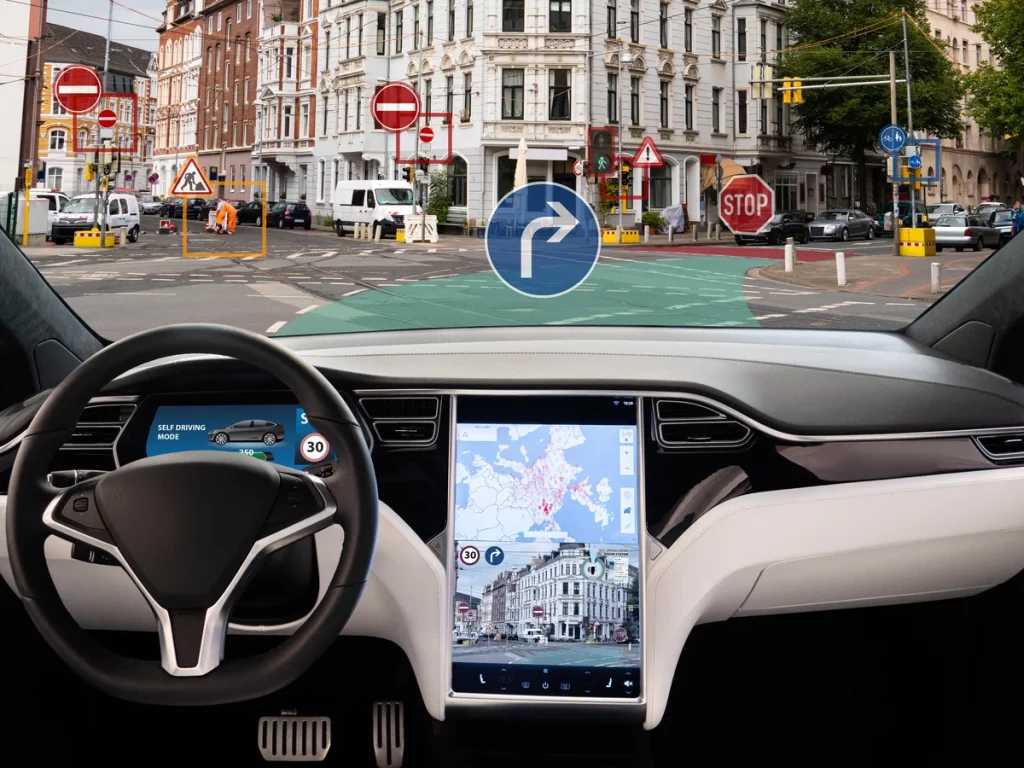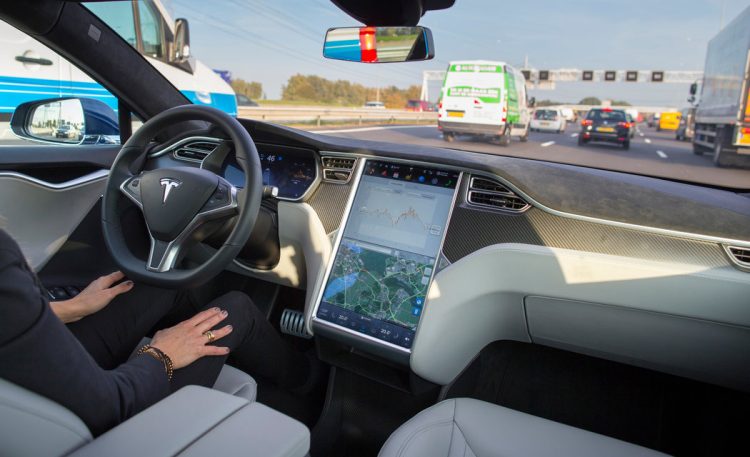Introduction:
The evolution of the transportation sector has been marked by several transformative trends, with electric vehicles (EVs) and autonomous driving technologies standing out as two of the most disruptive forces in recent years. As both technologies advance, the potential for their convergence—autonomous electric vehicles (AEVs)—has sparked significant interest and debate among experts, automakers, and consumers alike.
This combination promises to redefine the future of mobility, offering a cleaner, safer, and more efficient transportation system. However, the question remains: will the pairing of electric vehicles and autonomous driving truly become the mainstream choice for mobility in the coming years? Or will technical, regulatory, and societal challenges prevent this vision from becoming a widespread reality?
In this article, we explore the convergence of these two technologies, the benefits and challenges associated with their combination, and whether autonomous electric vehicles (AEVs) can truly become the cornerstone of future transportation.
1. The Rise of Electric Vehicles: An Evolution in Mobility
The shift from internal combustion engine vehicles to electric vehicles has been a major trend over the last decade, driven by the need to reduce carbon emissions, improve air quality, and address the global climate crisis. This transformation is supported by rapid advancements in battery technology, energy efficiency, and renewable energy infrastructure, as well as growing governmental incentives aimed at promoting sustainable transport options.
A. The Environmental Imperative
The rise of electric vehicles (EVs) is primarily motivated by their potential to mitigate the environmental impact of traditional gasoline-powered vehicles. As governments worldwide set carbon neutrality and zero-emission targets, the EV market is poised for explosive growth. The push for clean energy sources, combined with increasing public awareness about the effects of fossil fuel consumption, has made EV adoption a key component of future mobility strategies.
With cities becoming more congested, and urban air quality continuing to degrade, there is a clear incentive to promote the shift toward sustainable transportation options. The ability of electric vehicles to drastically reduce harmful emissions has positioned them as a critical player in efforts to combat climate change and improve urban living conditions.
B. Technological Advancements and Consumer Demand
Alongside the environmental considerations, technological advancements have made electric vehicles more affordable and efficient. Improvements in battery technology (e.g., higher energy density, longer lifespans, and faster charging times) have made EVs more practical for daily use, increasing their appeal to mainstream consumers. Furthermore, the growing network of fast-charging stations is alleviating the concern of range anxiety, enabling consumers to adopt electric vehicles with confidence.
Moreover, government incentives, subsidies, and the imposition of emission standards are nudging consumers toward electric alternatives. With traditional automakers like Volkswagen, General Motors, and Ford transitioning toward electric fleets, the consumer market for EVs is expected to expand rapidly in the next decade.
2. The Rise of Autonomous Driving: A Revolution in Safety and Convenience
While the electric vehicle revolution has been ongoing for some time, autonomous driving technology has only recently begun to make waves in the automotive industry. Self-driving cars, powered by a combination of artificial intelligence (AI), machine learning, sensors, and lidar systems, have the potential to completely change how people think about mobility.
A. Enhancing Safety and Efficiency
One of the most compelling arguments for autonomous driving is the promise of enhanced safety. According to the National Highway Traffic Safety Administration (NHTSA), 94% of traffic accidents are caused by human error. By removing the driver from the equation, autonomous vehicles (AVs) could dramatically reduce accidents, injuries, and fatalities. Self-driving cars can operate with greater precision, follow traffic rules more strictly, and react faster to road conditions than human drivers, potentially saving thousands of lives annually.
Autonomous driving also holds the promise of increased efficiency. Self-driving vehicles can communicate with each other and traffic infrastructure to optimize driving patterns, reducing congestion and improving traffic flow. Additionally, the potential for platooning—where multiple autonomous vehicles travel closely together in a coordinated manner—could further enhance the fuel efficiency and speed of long-distance travel.
B. Redefining Mobility and Accessibility
Beyond safety and efficiency, autonomous driving has the potential to redefine mobility itself. Self-driving cars can revolutionize urban transport by providing more accessible options for people who may be unable to drive due to age, disability, or other factors. Autonomous vehicles can become part of a broader mobility-as-a-service (MaaS) ecosystem, allowing consumers to summon a self-driving car for short trips, eliminating the need for private car ownership and reducing congestion.
The shared economy model could play a central role in future autonomous driving applications. Ride-hailing services like Uber and Lyft are already exploring autonomous vehicles, envisioning a future where fleets of self-driving EVs are deployed on-demand to pick up passengers, further decreasing the need for individual car ownership.

3. Combining Autonomous Driving and Electric Vehicles: Synergy or Challenge?
While both electric vehicles and autonomous driving have immense potential individually, combining the two technologies promises to create a seamless, sustainable, and highly efficient transportation system for the future. However, the combination of these technologies presents both opportunities and challenges.
A. The Advantages of Autonomous Electric Vehicles (AEVs)
When autonomous driving is paired with electric vehicles, the benefits extend beyond the sum of their parts. The integration of AI-powered autonomous systems with clean, zero-emission vehicles could create an eco-friendly alternative to traditional transportation that is both safe and efficient.
- Environmental Benefits: Autonomous electric vehicles would contribute even more significantly to the reduction of carbon emissions and air pollution. By removing human drivers from the equation, the vehicles could be programmed to drive in the most fuel-efficient and eco-friendly manner possible. The absence of excessive idling, unnecessary acceleration, and inefficient routing would further optimize the EV’s environmental benefits.
- Cost-Efficiency: Autonomous electric vehicles could drive down transportation costs in multiple ways. The combination of autonomous driving and electric propulsion reduces the need for traditional fuels and significantly lowers maintenance costs, as electric vehicles generally require fewer repairs than combustion engine vehicles. Additionally, ride-sharing services that rely on autonomous electric vehicles could make transportation more affordable for the general public.
- Better Utilization of Vehicles: Autonomous EVs would be constantly on the move, reducing downtime typically associated with human-driven cars (e.g., parking, idle time). In a shared economy, a fleet of self-driving EVs could operate 24/7, offering affordable mobility solutions and reducing congestion in urban areas.
- Reductions in Urban Traffic and Parking: Self-driving electric cars can optimize routes, avoid traffic congestion, and even park themselves in efficient, automated parking garages—freeing up precious space in crowded cities. This, in turn, would reduce the need for vast amounts of parking infrastructure in urban centers, improving the efficiency of urban spaces.
B. The Challenges to Overcome
While the potential benefits are significant, combining autonomous driving with electric vehicles is not without its challenges:
- Technological Hurdles: The development of autonomous driving systems that can operate safely and reliably in complex urban environments remains a significant hurdle. LiDAR sensors, radar systems, and camera-based systems all need to be perfected to ensure that autonomous EVs can safely navigate busy streets, handle inclement weather, and make real-time decisions based on unpredictable road conditions.
- Regulatory and Legal Barriers: Governments and regulatory bodies need to establish clear frameworks for the safe deployment of autonomous vehicles. This includes addressing issues of liability, insurance, road safety, and data privacy. Many countries have yet to pass legislation that would allow fully autonomous vehicles on public roads, which could delay the widespread adoption of autonomous EVs.
- Infrastructure Limitations: The adoption of autonomous vehicles depends on the infrastructure that supports them. High-definition maps, vehicle-to-vehicle (V2V) communication systems, and smart roadways need to be developed in parallel with the vehicles themselves. Furthermore, widespread access to fast-charging infrastructure is crucial for electric vehicles, especially those in shared mobility services that require constant recharging.
- Public Perception and Trust: While autonomous driving technology is evolving, consumer trust remains a key barrier. Public concerns about the safety of autonomous vehicles, especially after high-profile accidents involving self-driving cars, will need to be addressed before widespread adoption occurs. Building confidence in the technology will be crucial for consumer acceptance.
4. The Path Forward: Will AEVs Become the Future of Mobility?
The integration of autonomous driving and electric vehicles holds enormous potential, offering a future where transportation is cleaner, safer, more efficient, and accessible to a broader population. The development of autonomous electric vehicles is a natural next step in the evolution of sustainable mobility, creating opportunities for shared, on-demand transportation services, smart cities, and reduced congestion and pollution.
However, the widespread adoption of AEVs faces several challenges, including technological, regulatory, and infrastructural hurdles. The timeline for achieving full autonomy and scalable EV adoption will depend on the pace of technological innovation, collaborative efforts between stakeholders, and the establishment of clear regulatory frameworks.
In the near future, it’s likely that we’ll see autonomous electric vehicles coexist with traditional vehicles and semi-autonomous EVs, gradually transitioning to fully autonomous electric mobility as technology and regulations catch up. While AEVs may not immediately dominate the market, their eventual rise is inevitable, and they may indeed become a cornerstone of future urban transportation systems.
As both electric and autonomous technologies continue to mature, they have the potential to significantly reshape the way we think about mobility, making it more sustainable, efficient, and inclusive than ever before. With the convergence of these technologies, the future of transportation is poised to be not only smarter but also more environmentally friendly—ushering in a new era of clean and autonomous mobility.











































